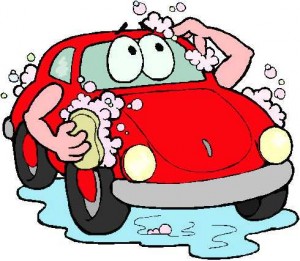Winter Car Storage
It’s that time of year, when we store our summer cars and other toys. But if they are not stored properly, significant damage can result. Here’s how to avoid it.
1. Add fuel stabilizer to the gas tank and fill the tank, then drive the car for a few kilometres to allow the stabilizer to move through the fuel supply system. The stabilizer stops the gas from breaking down, and the full tank minimizes the airspace in the tank, so rust-forming condensation does not occur. It shouldn’t be necessary to start the engine during the winter. The negative effects of a cold start outweigh the benefits.
If you are going to store a car for more than a year, it’s best to completely drain the tank and leave it ventilated. If the car is carbureted, run the engine until the carb is dry.
 2. Change the engine oil and filter. Old engine oil has acids and contaminants that can etch smooth engine surfaces. Run the engine for few minutes to let the fresh oil circulate. Consider using an engine oil fogger to coat valves and cylinder walls if the car is to be stored for more than a few months.
2. Change the engine oil and filter. Old engine oil has acids and contaminants that can etch smooth engine surfaces. Run the engine for few minutes to let the fresh oil circulate. Consider using an engine oil fogger to coat valves and cylinder walls if the car is to be stored for more than a few months.
3. Remove the battery and store it in a cool place. At the minimum, disconnect the negative terminal. Newer batteries have remarkable longevity, but they should be checked every few months to be sure they maintain their voltage, usually 12.6 to 12.8 volts.
4. Brake fluid is hydroscopic (absorbs water) unless it meets DOT 5 specs. If your system has not been flushed in a few years, now would be a good time. Drain the master cylinder and add fresh fluid, then bleed the brake lines. To protect rotor surfaces coat them with WD-40, but avoid the pads. Clean off the WD-40 with a spray can of brake cleaner in the spring.
5. Check the specific gravity of the coolant. Cooling systems need service every 2 – 3 years, your owner’s manual will tell you the recommended frequency.
 6. Wash the outside of the car. Hose out the wheel wells and under carriage where dirt may have collected. Vacuum the interior and remove any soils which may cause condensation and mold. Clean all hard surfaces with Armor-All or a similar product. Clean the floor mats and store them separately. Waxing is optional. It’s good for the chrome but is not necessary for modern paints.
6. Wash the outside of the car. Hose out the wheel wells and under carriage where dirt may have collected. Vacuum the interior and remove any soils which may cause condensation and mold. Clean all hard surfaces with Armor-All or a similar product. Clean the floor mats and store them separately. Waxing is optional. It’s good for the chrome but is not necessary for modern paints.
7. Check the car for any rust spots. If you find any damage now is the time to apply appropriate paints or sealants. If you have a rust protection contract, this would be a good time for an inspection.
8. Put mouse traps in the car and check them regularly. Don’t use mouse poisons, you could end up with decaying mouse carcasses in inaccessible areas of the car.
9. It’s not necessary to block up the car for winter storage, but it is recommended for longer term storage. In that case it is best to block the car high enough to relax the suspension. A coating of Armor-All on the tires will help preserve their appearance.
10. Inside storage should be free from moisture. A hay barn with stone walls and a dirt floor could be trouble. If you have to store on a dirt surface, first cover it with a sheet of plastic which will minimize condensation. An upper level, with good ventilation and a wood floor is preferable. Avoid plastics tarps, they can create condensation.
11. Outdoor storage is acceptable provided you have a proper car cover and put plastic on the ground. Avoid a windy location; a flapping car cover can cause damage to the finish.
12. Print this check list and put it in the car. It will remind you of what you did, or didn’t do, come next summer.
Following the above tips will make getting the car going in the spring a breeze, and will greatly protect your investment.
